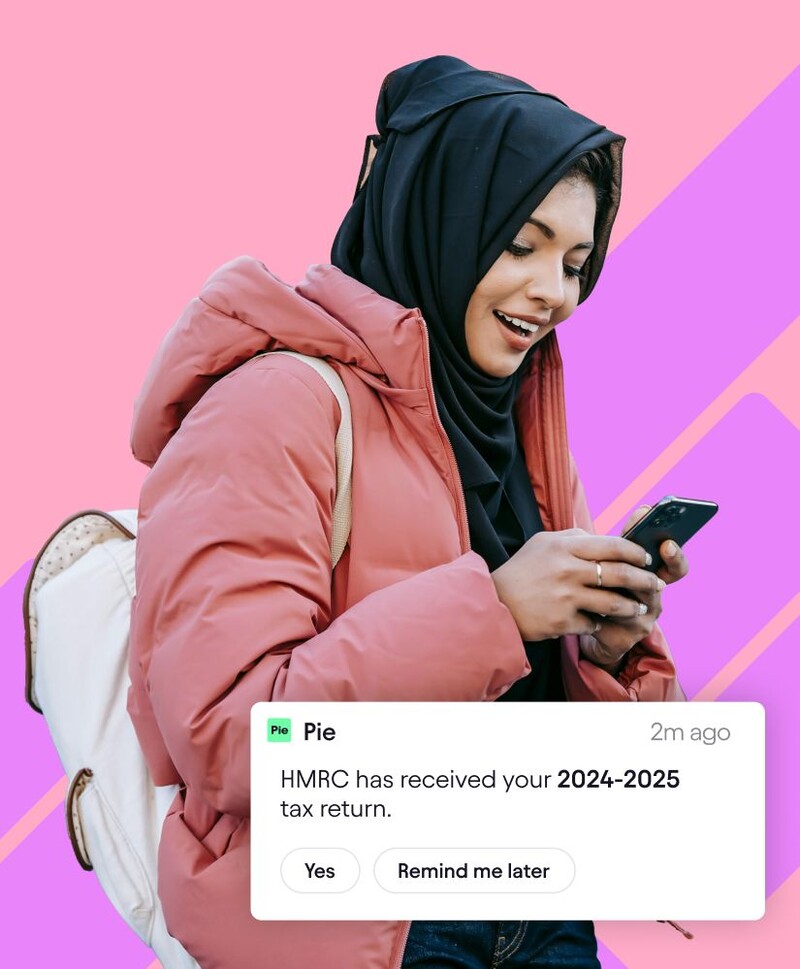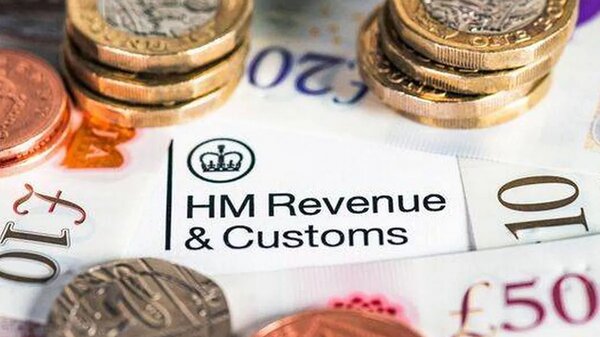Expecting a baby but not eligible for Statutory Maternity Pay? Maternity Allowance could be your financial lifeline during pregnancy and early parenthood.
This non-taxable benefit supports self-employed women and those who don't qualify for SMP. It provides crucial income when you need it most.
Understanding the eligibility criteria and application process is key. This helps you access support without unnecessary stress or delays. The payment can significantly impact your household finances during maternity leave. It gives you breathing room to focus on your new arrival.
Our tax experts at Pie tax can simplify your maternity benefit claims with personalised guidance. Or if you're just here to get to grips with it all, let's break it down!
What is Maternity Allowance?
Maternity Allowance is a government benefit for pregnant women who can't get Statutory Maternity Pay. It's a financial safety net when you're preparing for a new arrival.
You can receive up to £172.48 per week for a maximum of 39 weeks (based on 2023/24 rates). That's a potential total of over £6,700 to support you during maternity leave.
The best bit? Unlike your regular income, Maternity Allowance is completely tax-free. You won't need to declare it on your tax return. It's particularly valuable for self-employed mums-to-be or women who've recently changed jobs. Those helping in their partner's business might otherwise miss out on maternity support.

How to Claim Maternity Allowance
To claim Maternity Allowance, fill out form MA1, available for download from GOV.UK. You can also request it by phone if you prefer paper forms. To start a new claim for Maternity Allowance, complete the maternity allowance claim form and follow the instructions provided.
You can apply from the 26th week of your pregnancy, when you’re about six months along. Don’t worry if you’re cutting it close you can still apply up to three months after birth. If you claim late, you can still receive backdated payments for up to three months.
Remember to include your MATB1 certificate from your midwife or doctor. You must provide evidence of your pregnancy and due date with this certificate.
Employed women need payslips covering at least 13 weeks from their test period. Self-employed mums should include evidence of self-employment and NI contributions.
Once submitted, you should receive a decision within 3-4 weeks. Payments typically start 11 weeks before your due date, unless you specify otherwise.
This process applies when making a new claim for Maternity Allowance.
Who Can Get Maternity Allowance?
You might qualify if you’ve been employed or self-employed for at least 26 weeks. These weeks must fall within the 66 weeks before your baby is due. The specific employment dates within this test period are important, as your eligibility depends on both the start date and end date of your employment during this timeframe.
Self-employed women need to have paid Class 2 National Insurance for at least 13 weeks. If you’ve missed some payments, you can usually pay these retrospectively. Agency workers may also be eligible for Maternity Allowance, depending on their work history and employment status during the relevant dates.
If you’ve recently stopped working, you might still be eligible. The key is having worked for 26 weeks during your test period and earned £30+ weekly for 13 weeks.
Women earning below the Lower Earnings Limit for SMP (currently £123 per week) can claim. This applies even if you’re still with the same employer. If you are receiving jobseeker's allowance or housing benefit, you may also be able to claim Maternity Allowance, depending on your circumstances and the benefits already claimed.
There’s also a special category for women helping with their spouse’s business. You might get a lower rate in this case, but it’s still valuable support.
Other benefits may be available for those on low income, and your eligibility for Maternity Allowance may be affected by benefits you have already claimed.

Who Can Get Maternity Allowance?
You might qualify if you’ve been employed or self-employed for at least 26 weeks. These weeks must fall within the 66 weeks before your baby is due. The specific employment dates within this test period are important, as your eligibility depends on both the start date and end date of your employment during this timeframe.
Self-employed women need to have paid Class 2 National Insurance for at least 13 weeks. If you’ve missed some payments, you can usually pay these retrospectively. Agency workers may also be eligible for Maternity Allowance, depending on their work history and employment status during the relevant dates.
If you’ve recently stopped working, you might still be eligible. The key is having worked for 26 weeks during your test period and earned £30+ weekly for 13 weeks.
Women earning below the Lower Earnings Limit for SMP (currently £123 per week) can claim. This applies even if you’re still with the same employer. If you are receiving jobseeker's allowance or housing benefit, you may also be able to claim Maternity Allowance, depending on your circumstances and the benefits already claimed.
There’s also a special category for women helping with their spouse’s business. You might get a lower rate in this case, but it’s still valuable support.
Other benefits may be available for those on low income, and your eligibility for Maternity Allowance may be affected by benefits you have already claimed.
Maternity Allowance for Self-Employed Mothers
If you’re self-employed, Maternity Allowance is likely your main financial support. The key requirement is having paid Class 2 National Insurance contributions.
You’ll need to have paid Class 2 NI for at least 13 weeks in your test period. This is the 66 weeks before your baby’s due date.
Your test period works differently from employed women. It’s based on National Insurance contributions rather than employer-specific earnings.
Keep detailed records of your self-employed work during pregnancy. These will be helpful when completing your MA1 form.
Self-employed mothers are entitled to paid time off during maternity leave to care for their babies and attend antenatal appointments, helping to support their health and well-being during pregnancy.
Even without enough NI contributions, you might still get £27 per week. This lower rate is better than nothing when you’re focusing on your new baby!

How Payments Work
Maternity Allowance is usually paid every 2 or 4 weeks directly into your bank account. You can choose which payment schedule works better for your budget.
The amount depends on your average earnings during your test period. The standard rate is 90% of your average weekly earnings, up to £172.48 per week. Maternity Allowance payments are made in the same way as your usual wages.
You can choose the start date for your payments. Payments can start from 11 weeks before your due date, or you can choose to start them later, either before or after your baby is born.
You’ll receive Maternity Allowance for up to 39 weeks. This gives you financial support for nearly 9 months while caring for your new baby.
You can work for up to 10 “Keeping in Touch” days without losing any allowance. This helps you stay connected to your business or workplace.
Maternity Grant: An Extra Boost for New Parents
Welcoming a new baby brings joy and extra expenses. The Maternity Grant is a one-off payment from the government designed to help eligible parents manage the initial costs of a new arrival.
If you’re already claiming certain benefits, such as Income Support, income-based Jobseeker’s Allowance, or income-related Employment and Support Allowance, you could be eligible for this valuable support.
To claim the Maternity Grant, you’ll need to complete a claim form (form SF100), which you can download from the government website or request by phone. When filling out your claim, be ready to provide proof of your income, such as recent payslips, and evidence of your baby’s due date or birth.
This could be your maternity certificate (MATB1) if you’re still pregnant, or your baby’s birth certificate if your baby has already arrived.
Final Thoughts
Claiming Maternity Allowance doesn't need to be complicated once you understand the basics. The tax-free nature makes it particularly valuable during maternity leave.
For self-employed women, staying on top of your Class 2 NI contributions is crucial. It's worth checking your NI record well before your baby is due.
Apply as soon as you can after your 26th week of pregnancy. This ensures your payments start on time when you need them most.
Remember that while the application form might seem detailed, the effort is worthwhile. The financial security it provides during this life transition is invaluable.

Pie tax: Simplifying Maternity Allowance Claims
Getting your finances sorted before maternity leave shouldn’t add extra stress during pregnancy. Our tools make the process straightforward and worry-free.
The UK’s first personal tax app, Pie tax helps track your Class 2 NI contributions in real-time, including contribution dates. This ensures you meet Maternity Allowance eligibility requirements without surprises and helps you keep track of benefits already claimed.
Our simple dashboard makes it easy to provide evidence for your MA1 application. We’ll alert you to any gaps in contributions that might affect your claim.
We provide clear guidance and advice on how Maternity Allowance works alongside other income sources, including regional differences such as those in Northern Ireland. This gives you complete financial clarity during this important transition.
For example, the app can show you exactly what information you need to submit and when, making the process even simpler.
Fancy seeing how it all works? Take a peek at the Pie tax app today.
Further information and advice: For more details on claiming Maternity Allowance or using the Pie tax app, consult official government resources or seek expert advice from organizations like Citizens Advice.











